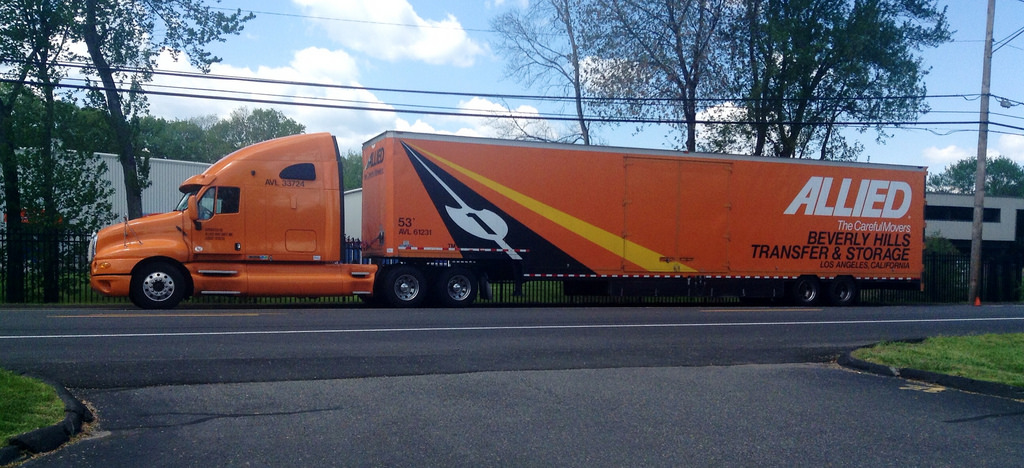(Note: this piece appeared in abridged form at boston.com on May 27)
It’s summer, which means many people are moving. Doing it yourself is physically tough and can be expensive. Using movers often makes a lot of sense. But how do you make sure you’re using a good one?

Photo credit: Mike Mozart/CC BY 2.0
We’ve helped thousands of renter find new apartments in cities across the country. Along the way we’ve learned a lot about the moving process. With that in mind, here are our 9 things to know about choosing and working with movers.
NOTE: This post does not provide and is not intended to provide legal advice and it may not be used as such. We’re just trying to help!
(1) Look at publicly-available information. All interstate movers are required to be both licensed and registered with the US Department of Transportation’s Federal Motor Carrier Safety Administration. That site will also have complaint reports for registered movers. If you don’t find your mover on that site, investigate. If the mover only does intrastate moves, it may not appear on the FMCSA website but it almost certainly will be regulated at the state level. Either way, confirm that the mover is licensed and registered somewhere.
Check out MovingScam.com and the DOT website. They’ll have good info on identifying scams and helpful suggestions for working with movers. Also, check with your local Better Business Bureau. If complaints appear, move on.
(2) Get an estimate. You need an estimate based on a walk-through. If the mover refuses to do so, or insists that you sign a contract (or make a deposit) before doing so, find someone else.
Why does this matter? Lots of reasons, but here’s an important one: interstate movers cannot require you to pay more than 110 percent of the price given in a non-binding estimate in order to get your property from them. This is called the 110 Percent Rule, and it prevents movers from holding your property for ransom. (Most states have a similar rule for intrastate movers). Expenses you incur over 110 percent of the non-binding estimate usually must be paid within 30 days. Note that there’s an exception from the federal 110 Percent Rule for services incurred after the estimate is signed.
(3) Pay attention to insurance. Check first that your mover is insured. Don’t work with one that isn’t. Second, federal law requires interstate movers to offer liability coverage for damage to your property. The baseline coverage for interstate movers is 60 cents per pound per item regardless of the value of the item. (This may be less for intrastate moves – for example, it’s 30 cents per pound in New York City.) The mover has to offer this at no cost. Movers must also offer additional coverage for a fee; this should protect you better, but make sure you understand its terms. Think before declining additional coverage – 60 cents per pound may not be enough to make you whole if something unexpected happens.
Also, some apartment buildings will require a certificate of insurance from your mover to cover damage to the building during the move. If you use a mover that can’t or won’t give that certificate you’ll need to deposit security with the building.
(4) Ask questions up front. What is the hourly rate? Is it per-person or for the whole team? If it’s per-person, how many people will be present? What other costs (e.g., fuel, waiting time, packing materials) will you incur, and at what rates? Make sure you know and get multiple quotes.
Consider whether you want to pack yourself or have the movers pack you up. If you can afford it you should have the movers pack; they’ll do a much better and faster job of it than you will.
(5) Look at the paperwork. In particular, look at the bill of lading, which details everything being moved, the origin and destination and the costs. It’s your receipt for the transaction – review it closely (including the fine print) and make sure it’s correct. And keep your copy on file!
Movers are required to provide you a copy of a pamphlet titled “Your Rights and Responsibilities When You Move”. Make sure you get it and read it.
(6) Supervise. Make sure you or someone you trust is there to watch the whole process.
(7) Storage. If you can’t move directly from your old place to your new place, or if some of your stuff won’t fit into your new place, you’ll need somewhere to put it during the transition. Many movers will offer to store your stuff temporarily. Check how much the space will cost, as well as the costs for moving into and out of the storage space. Also confirm that your property is insured while in storage, and check whether there have been any bedbug or vermin reports for that storage space.
When you’re moving out of storage into your new place, check the bill of lading for the move into your new place against the bill of lading for the move out of your old place. Make sure all your things arrive!
(8) Gratuity. It’s nice to tip for good service, but you’re not obligated to do so. Kindnesses like cold drinks on a hot day will go a long way. That said, don’t offer alcoholic beverages. It’s illegal as a matter of federal law for the movers to have alcohol in a commercial vehicle, and many moving companies will fire employees for having alcoholic beverages in the moving truck or van.
(9) What to do if you have a problem. Don’t panic. Try to work it out with your movers first. If you can’t, MoveRescue (800-832-1773) is a good place to start.
__________________________________________________________________
Wondering how you’re going to cook in your small kitchen? We’ve got some ideas for you.
Or maybe you’re thinking of subletting? Here’s our six tips on how to do it best.




